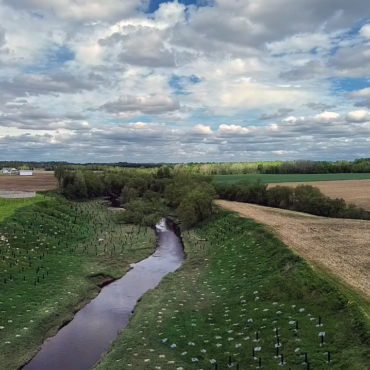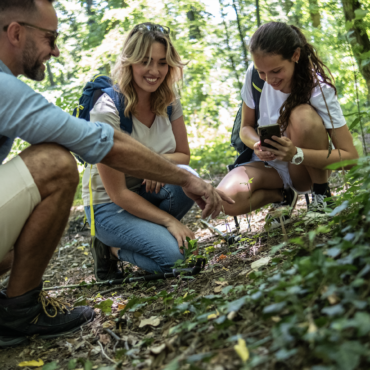Blog & News
Biodiversity
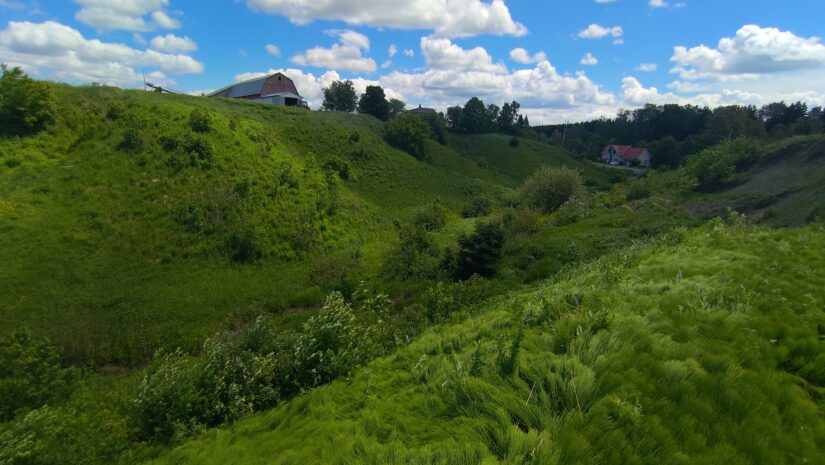
What is an agricultural corridor
At first glance, the term “agricultural corridors” may mean nothing to you. However, you have likely seen them during your drives or while cycling or walking in the countryside.
Agricultural corridors are areas located along the edges of cultivated fields that cannot be farmed by farmers because of their steepness. Often border by watercourses, through time they have been shaped by erosion and landslides and remain very vulnerable to such phenomena. Due to their location, they serve as real buffer zones between cultivated fields and watercourses.
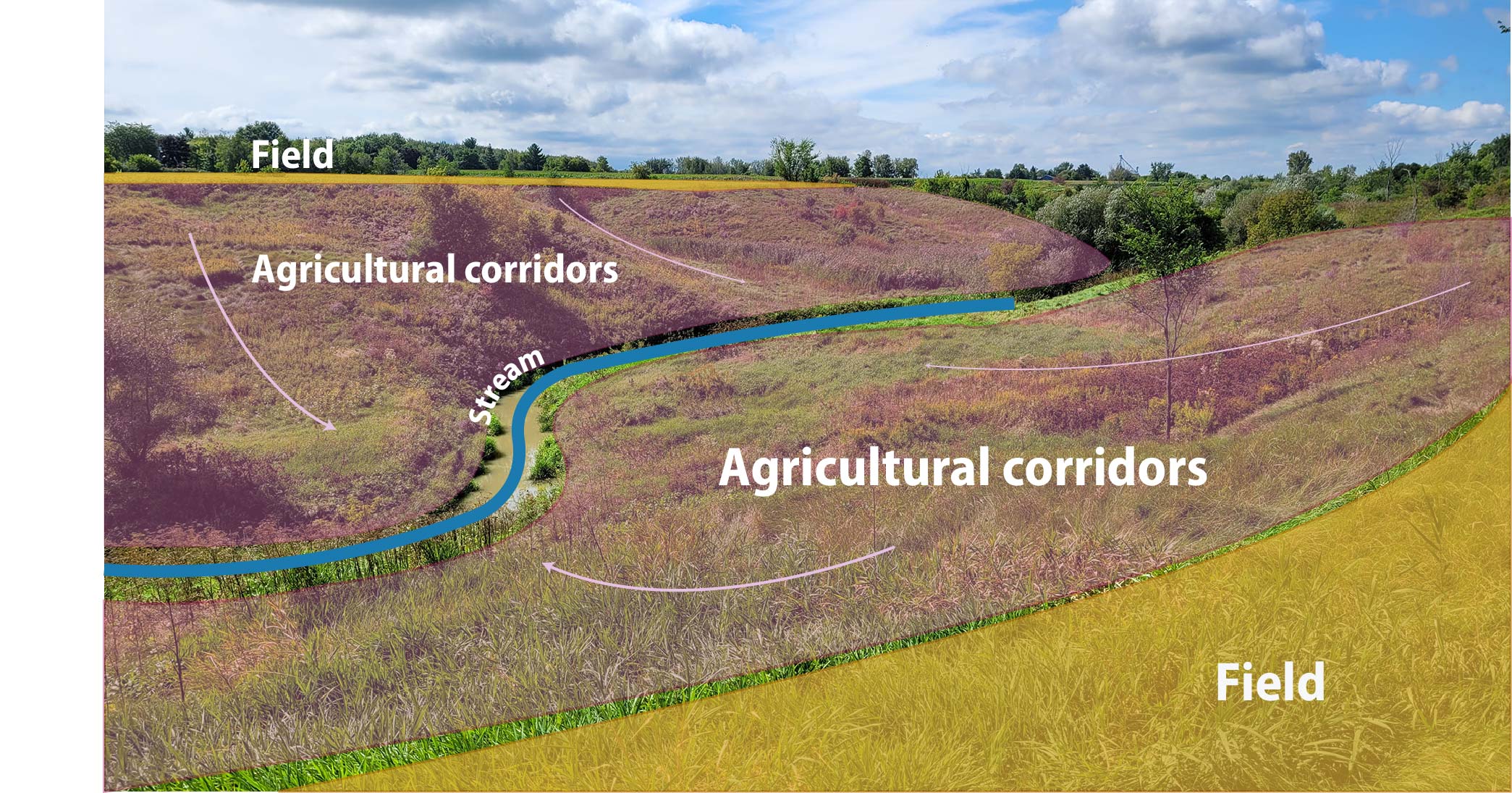
In the past, farmers were able to use these areas for grazing livestock, but in the early 2000s new regulations in Quebec prohibited livestock access to watercourses. As a result, agricultural corridors lost their usefulness and have now become wildlands.
Since the removal of livestock, nature has begun to reclaim these spaces. Depending on the age and conditions of the environment, one can observe herbaceous plants, shrubs, and young trees. In most agricultural corridors, the vegetation stays low because of herbaceous plants’ high density. However, they represent a huge potential of unused land in agricultural areas. Their redevelopment could therefore help combat climate change as well as the biodiversity crisis.

How can agricultural corridors help us adapt to climate change?
Reforesting these waterways is an interesting option due to the numerous ecological ecological benefits (also called ecosystem services) of trees.
In fact, a forest along a watercourse will significantly contribute to:
– Carbon storage: Trees can sequester large amounts of carbon, thereby reducing the amount of CO2 in the atmosphere, a major contributor to climate change.
– Increasing biodiversity: Planting trees creates new habitats for wildlife and flora. This leads to increased biodiversity and better ecological connectivity. linking habitats fragmented by agricultural activity. Trees especially support pollinator populations, which can enhance the yield of surrounding crops.
– Soil preservation and erosion control: Agricultural corridors are particularly susceptible to erosion due to their location along watercourses. Trees and shrubs, with their dense root systems, help stabilize soil on the slopes, preventing agricultural soil loss and sedimentation in the watercourses.
– Improving water quality: The root systems also help capture some pollutants (especially from agricultural sources). The forest cover can also reduce the temperature of river waters. The presence of trees results in overall better health for the watercourses.
– Reducing the spread of invasive exotic species: The best way to combat invasive species is to maintain vegetative cover in at-risk areas. Specifically, mature trees, through the shade of their canopy, create conditions unsuitable for most invasive species establishment.

It is important to keep in mind that a diverse ecosystem (habitats, fauna, and flora) is a healthy ecosystem. Agricultural wildlands are not inherently problematic; in fact, they often serve as important ecological areas for endangered species. Therefore, reforesting all agricultural corridors doesn’t make much sense.
The decision to restore some waterways through reforestation should be based on a prioritization process. This prioritization allows us to focus on most suitable areas for restoration and those with the most urgent ecological needs, particularly regarding ecological connectivity and the preservation of important habitats like wetlands .
Habitat, a consulting firm specializing in nature-based solutions, has conducted this identification and prioritization work for agricultural corridors. The result is a map of waterways to restore across Quebec, available here!
(Below: A screenshot of the map of agricultural corridors, represented by the purple lines)
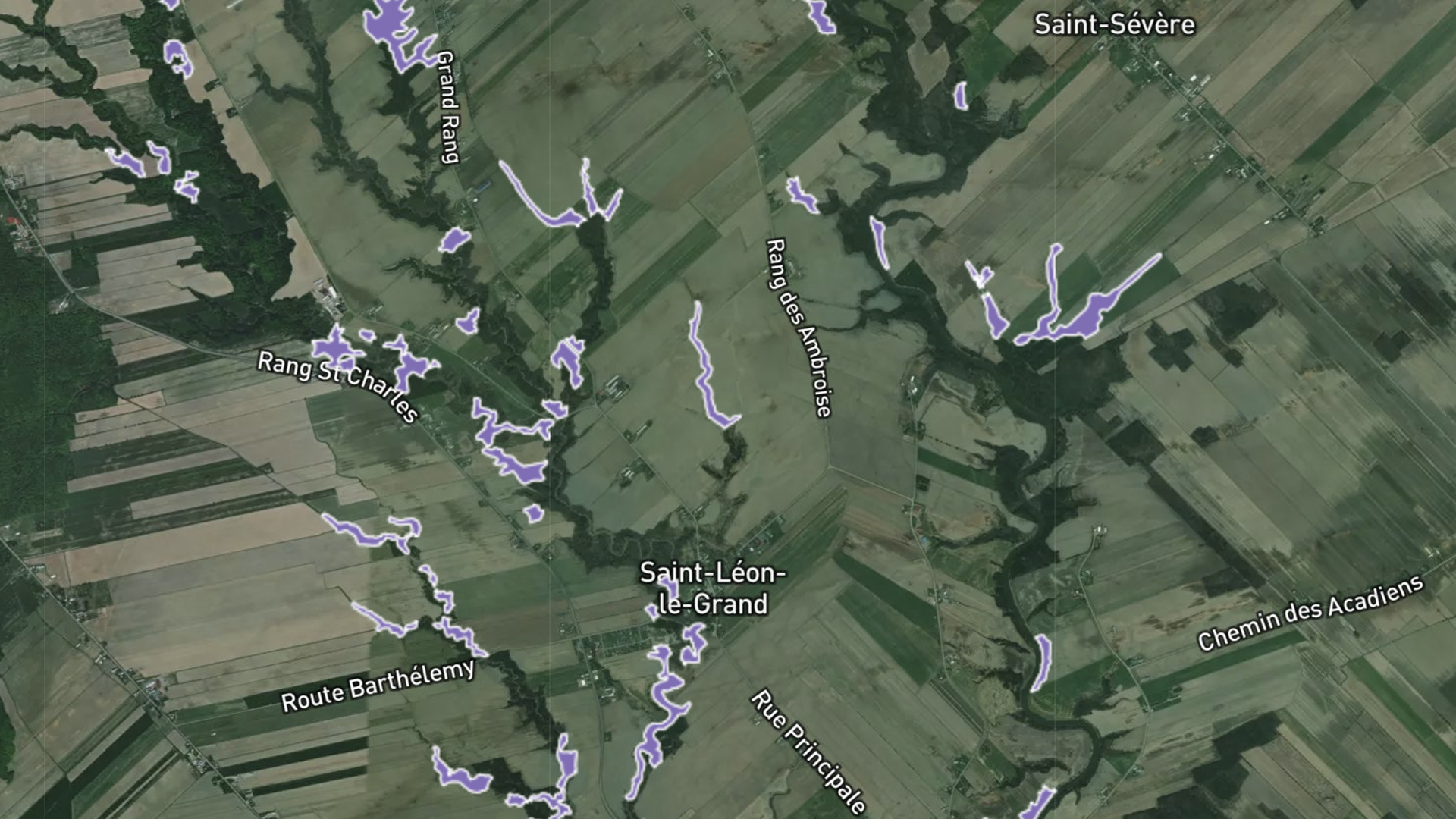
The waterways have been chosen using geographic data, considering areas around watercourses in agricultural settings with an average slope greater than 15%, while also excluding important wetlands that would be better left as wildlands. The classification of waterways for prioritized restoration is then based on criteria such as potential area and ecological connectivity, without threatening endangered species.
The Role of Earth Day and Its Partners in Restoring Agricultural corridors
Based on this identification work, Earth Day Canada, Habitat, the University of Quebec in Outaouais (UQO), and the Union of Agricultural Producers (UPA) established the project “Tomorrow’s Forest – Green Infrastructure”, aimed at developing the technical and scientific knowledge necessary for deploying natural infrastructures to restore agricultural corridors. With the participation of willing farms in Quebec, the project allows for testing various planting methods, as well as about thirty species of native trees and shrubs.
(Below: One of the agricultural corridors planted in 2024 on the land of a volunteer farm)
It aligns with the goal of combating and adapting to climate change: the planted species must fulfill several functions, including the previously mentioned ecosystem services, and this diversity must also ensure the resilience of this future forest against climate change. This will ensure that the forest can recover even in the event of epidemics or extreme weather events (such as the derecho that swept across Quebec from west to east in 2022).
Financed by the MELLCCFP with $4.5 million by 2025, “Tomorrow the Forest – Green Infrastructure” has already enabled the planting of more than 25 hectares of forest since 2023. Overall, the project aims to plant approximately 60 hectares by summer 2025. The lessons learned from these initial plantings will help guide the planning and development of future agricultural corridors restorations in the next phase of the project.
For more information, visit the project page!

Tree planting, Project Manager
Clémence Richer
Particularly enthusiastic about the profound changes needed to make the world more sustainable and enjoyable, Clémence is convinced that urban planning can provide solutions to current crises, and she strives to implement this in her professional practice. When she’s not trying to change the world, she paints, hikes, or reads.
View all posts...Related posts :
Contact us
Earth Day Canada
5818, boulevard Saint-Laurent
Montréal (Québec) H2T 1T3 Canada
Phone : (514) 728-0116
Toll free : 1 800 424-8758
Fax : (514) 303-0248
Email: hello@earthday.ca
2025 © Earth Day Canada. All rights reserved.
Privacy policy · Terms of use · Trademark
